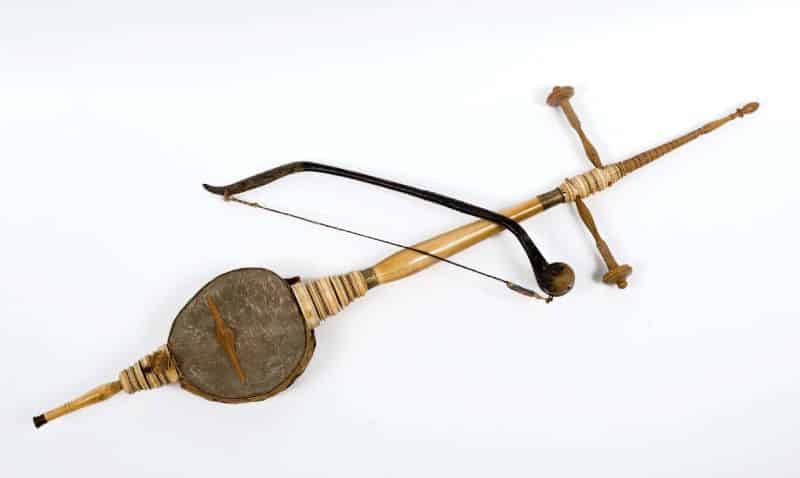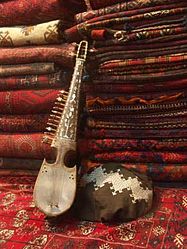The Evolution of the Violin
The Evolution of the Violin
The oldest ancestor of the violin is the ravanastron which originated from Sri Lanka. It’s comprised of one 22-inch string spanning three octaves, which is similar to the combined tonal range and string length of all four strings of the modern violin.

The next ancestor of the violin is the rabab which was
introduced by the Arabs to Spain in the 11th century. It is an Arab
fiddle and is the “parent” of the European rebec, which was the first-string
instrument to be held under the chin. Below are photos of the rabab on the left, and the rebec on the right.


The violin evolved during the Renaissance from an earlier bowed instrument called the medieval fiddle or vielle. The fiddle was a medieval European bowed, stringed musical instrument that was created in the 10th century.

When listening to the music played by the medieval fiddle (see video below), I can envision music played in one of today’s renaissance fairs. It was used during a time of castles; its music being played for Nobel households. Music during this time was monophonic. Later masses and motets employed polyphony. Medieval music was comprised of a series of whole steps and half steps known as a mode and what we now call a scale.
The violin was introduced to the world between 1520 and 1550. The two earliest violin makers were both from Northern Italy. The oldest in existence today was made in 1565 by Andre Amati. The violin has changed very little from its beginnings. The earliest violins had three strings and an additional string was added in the mid-16th century. All the strings were made from gut until about 1700, when one (the G String) had silver wire added to change the sound. Today all the strings are a mixture of nylon and metal. In the 18th century, the instrument underwent its most major physical evolution. Changing the height of the bridge and lengthening the neck and fingerboard increased the brilliance and volume of the sound, which was much needed for concert hall performance.
The first composition written for the violin is an Italian sonata of the 1600’s by Giovanni Paolo Cima.
Some of the most famous violin pieces in history are Chaconne from Partita No. 2 In D Minor by J.S. Bach, Violin Concerto by Beethoven, and Violin Concerto by Tchaikovsky. My favorite out of the three is by Tchaikovsky who wrote this in March 1878 while staying in the mountains of Clarens, Switzerland on Lake Geneva. (Warning!!! It's over thirty minutes long.)
The composition is described as having fast octaves, double stops, flying spiccato, tenths, and 4-note chords in all positions. I literally got goosebumps when I listened to it. The violin solos without the orchestra playing in the back took my breath away. Its theme begins slowly, then become more intense and fragmented again and again throughout the composition. Trills are detected throughout. The story behind this composition is very interesting with a bit of scandal and you can detect some of that emotion in it.
Fast forward to today, we now have electric violins, which first were played in the 1930s. There are metal violinists like Mark Wood. His music is a change from renaissance and classical compositions. One of the most famous compositions for the electric violin is First Light by Lindsey Stirling. The music takes on an electrical, almost keyboard-y affect. The song is purely instrumental, played in C# Minor and 102 BPM. I love how it builds then ends in a poetic way.
Now that we’ve discussed the violin and it's history, I’ll end this blog entry with a fun video of the evolution of violin music.
Works Cited
Apel, Willi, and Thomas Binkley. “Italian Violin Music of the Seventeenth Century.” Indiana University Press. 1990. https://books.google.com/books?id=DP5i52zOXcIC&lpg=PA25&ots=lNpt3d8Gy4&dq=was%20the%20first%20violin%20composition%20by%20Giovanni%20Paolo%20Cima&pg=PA27#v=onepage&q=was%20the%20first%20violin%20composition%20by%20Giovanni%20Paolo%20Cima&f=false
Beek, Michael. “The Violin: When It Was Invented, Who Made Them and How It Has Changed throughout History.” BBC Music Magazine. 2 Aug. 2021. https://www.classical-music.com/features/articles/violin-facts-and-invention/
“History of the Violin.” Wikimedia Foundation. 9 July 2021. https://en.wikipedia.org/wiki/History_of_the_violin
“Overview of Medieval Music.” Lumen Learning. https://courses.lumenlearning.com/musicappreciation_with_theory/chapter/overview-of-medieval-music/
“The Origins of the Violin: The Birth of the Violin - Musical Instrument Guide.” Yamaha Corporation. https://www.yamaha.com/en/musical_instrument_guide/violin/structure/
“Top 10 Most Famous Violin Pieces - Ranked: Classical Register.” Classical Register. 9 Sept. 2020. https://www.classicalregister.com/497779_top-10-greatest-violin-pieces-in-classical-music
Van Dyck, S. “The History of Ancient Violinmaking.” Benning Violins. https://www.benningviolins.com/the-history-of-ancient-violinmaking.html
“Violin.” Encyclopedia Britannica, Inc. https://www.britannica.com/art/violin
“Violin History: When & Who Invented the Violin.” Noname Music. 4 Jan. 2021. https://www.nonamehiding.com/violin-history/
“What Are the Differences between an Acoustic and an Electric Violin?” 3Dvarius. 2 Sept. 2021. https://www.3d-varius.com/differences-acoustic-electric-violin/ Wildridge, Justin. “5 Pieces of Music for Electric Violin.” CMUSE. 8 Oct. 2019. https://www.cmuse.org/music-for-electric-violin/
Williams, Emma. “The Vielle.” Early Music Shop. 7 Jan. 2020. https://earlymusicshop.com/blogs/introducing/the-vielle
As a violin player it's super cool to see the photo of one of the earliest violins. It's so crazy to see how much the look has changed over the many years. Also I absolutely love Tchaikovsky - my favorite piece by him is Swan Lake. I never knew that changing the location of the bridge and the length of the neck and fingerboard could make such a difference in sound! I enjoyed watching the video of Lindsey Stirling, who I'm also a huge fan of. It's interesting to hear the difference between a violin played acoustically and electric. I prefer acoustic just because the sound is more raw and you can add very small details that kind of get lost when you play an electric violin.
ReplyDeleteHi Doris!
ReplyDeleteI also wrote about the evolution of the violin for my blog post. I was not brave enough to do the entire evolution of the violin but you did such a wonderful job of explaining the key elements in each of its modifications. While I agree with you that the structure of the violin has changed very little, the modifications that were made opened up huge opportunities for its evolution. For example, adding the 4th string allowed a wider range of music to be written and played and changing the string material enhanced its sound. I actually was about to suggest listening to the last video you provided! It is so interesting to hear the evolution of violin music:)